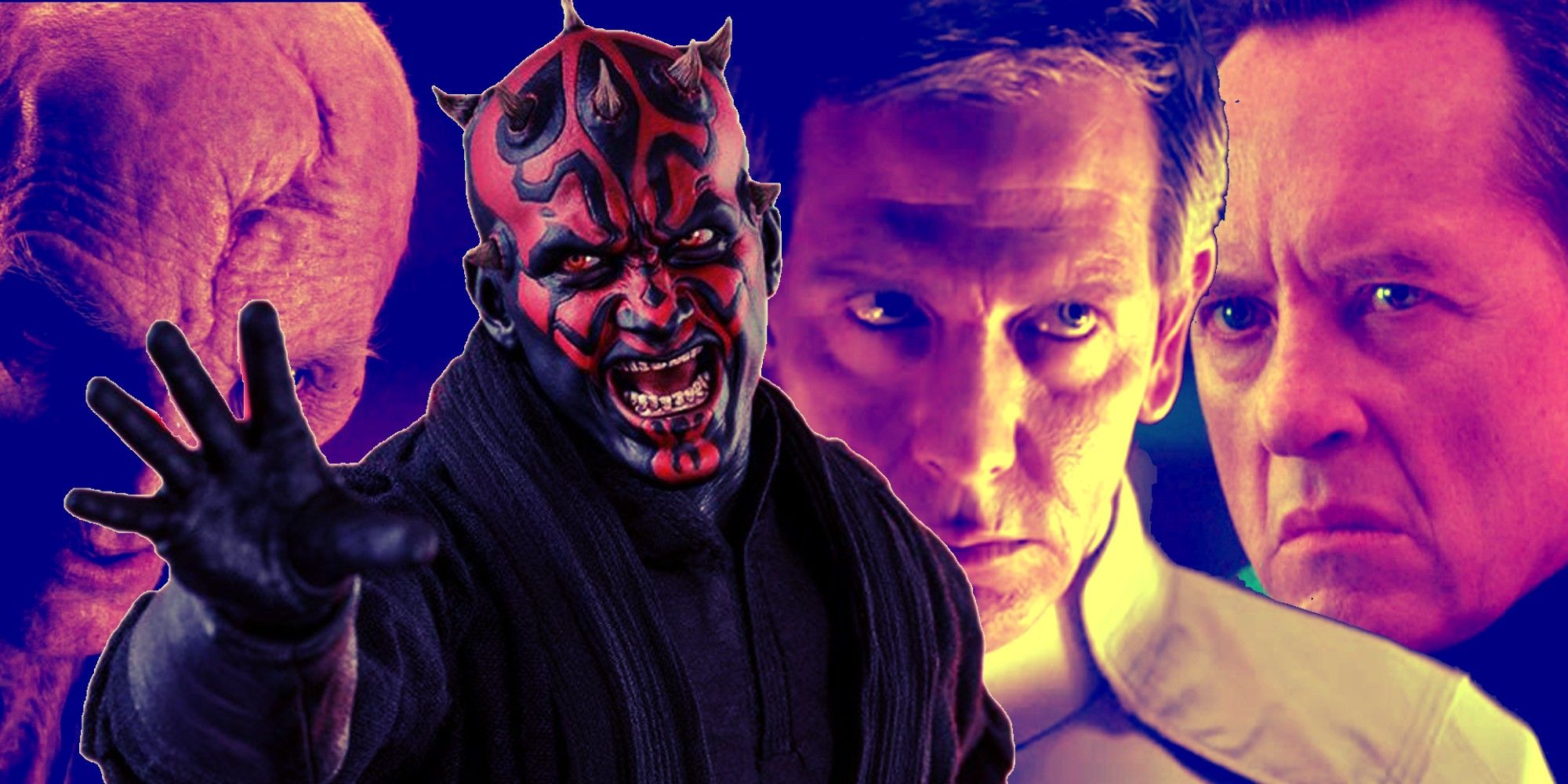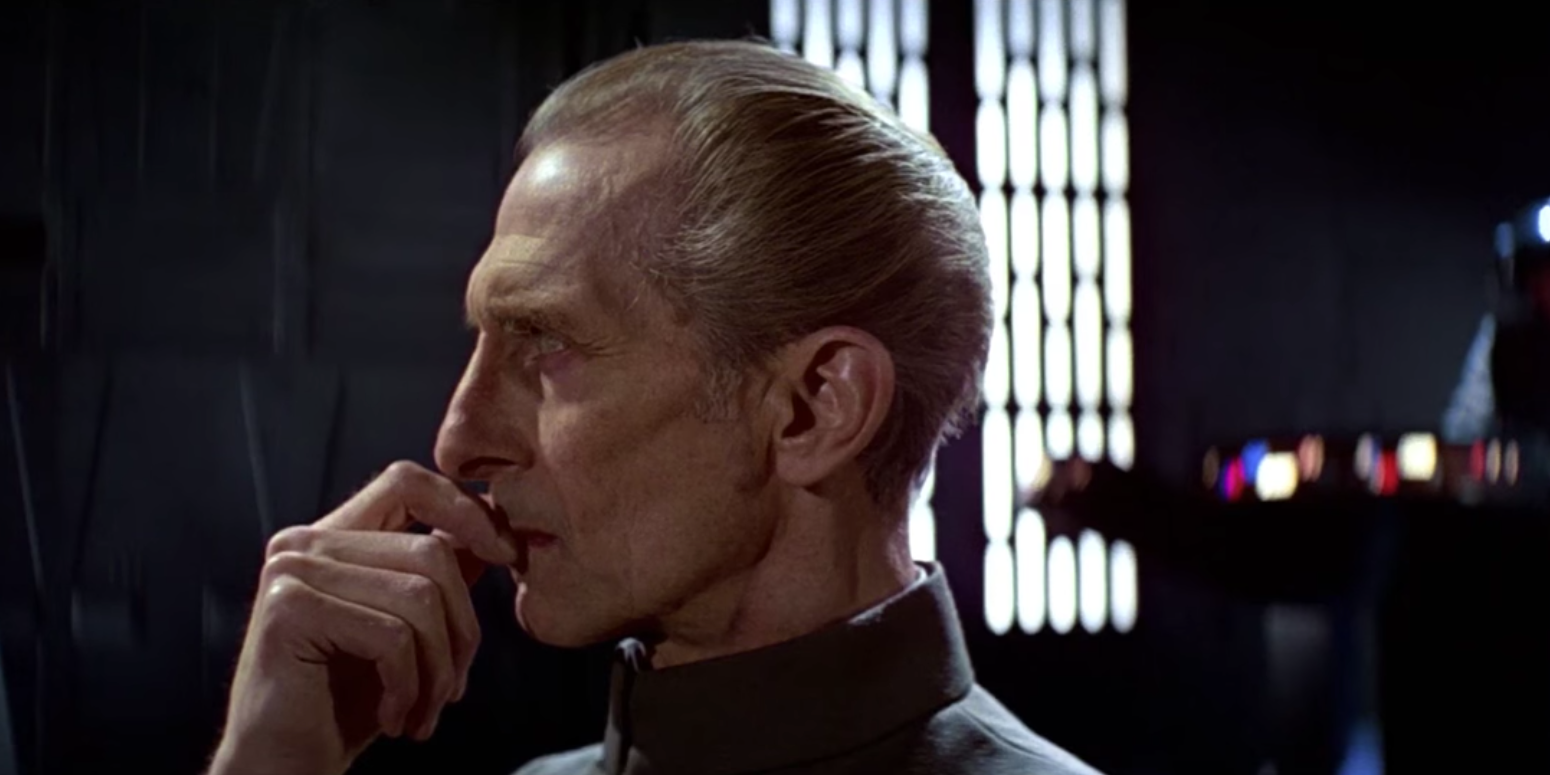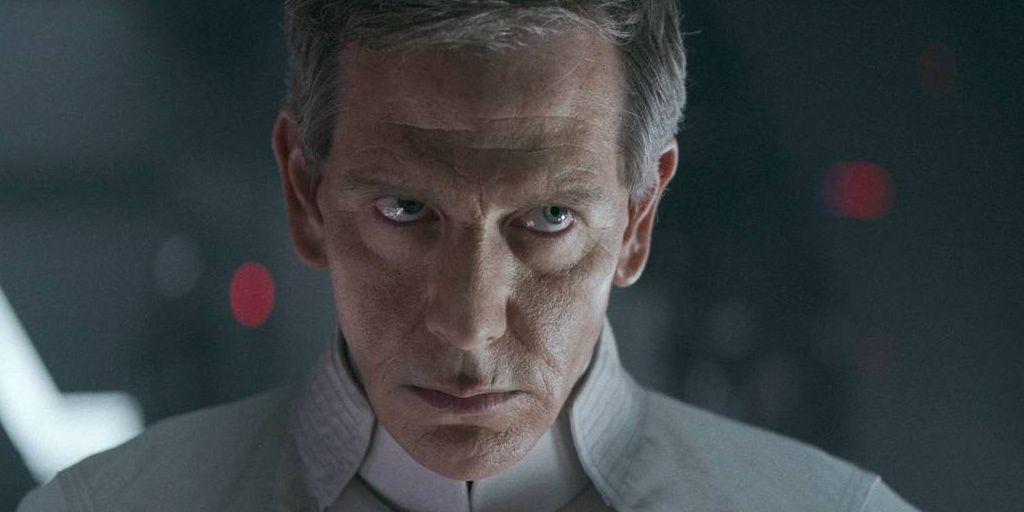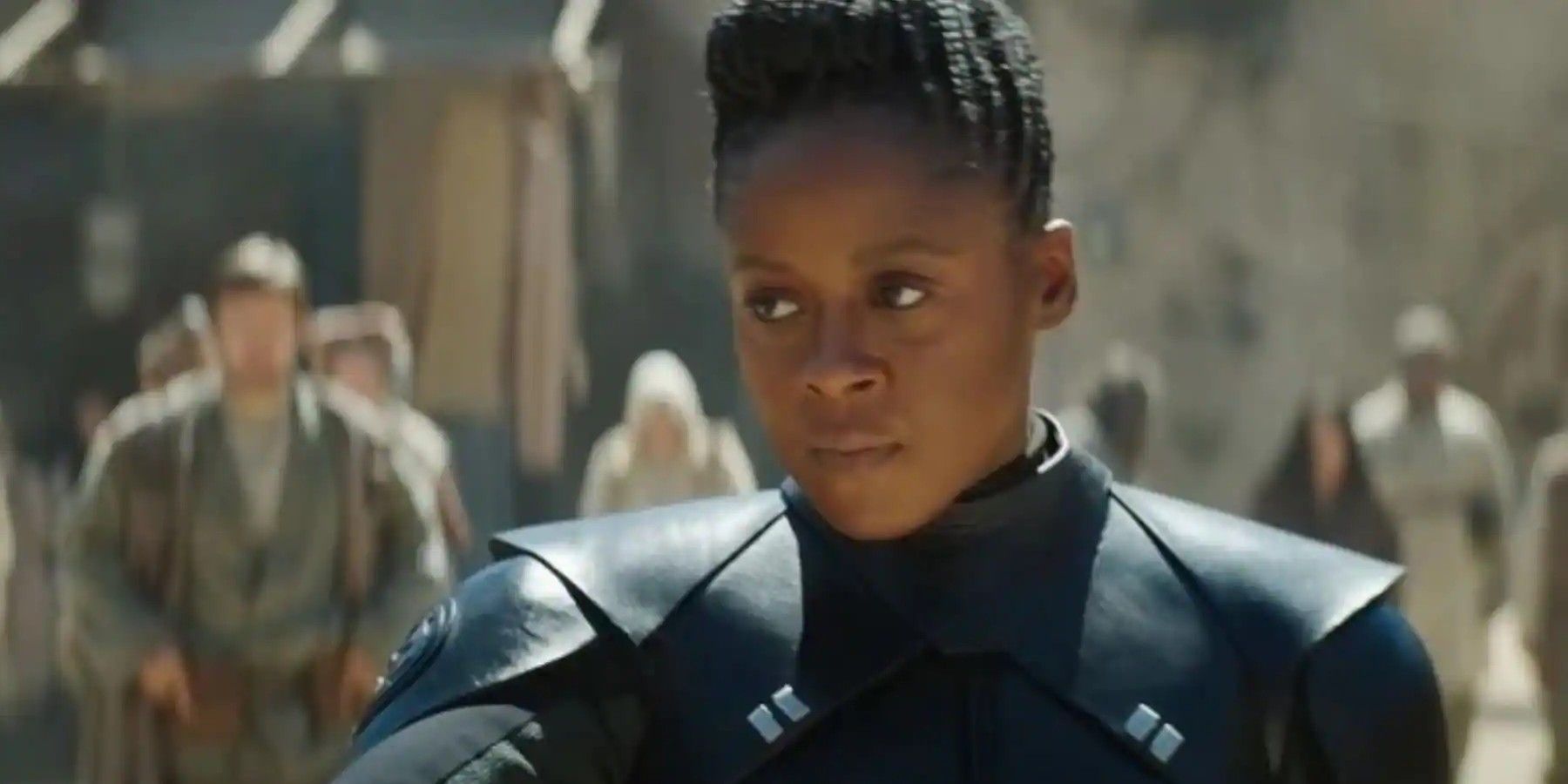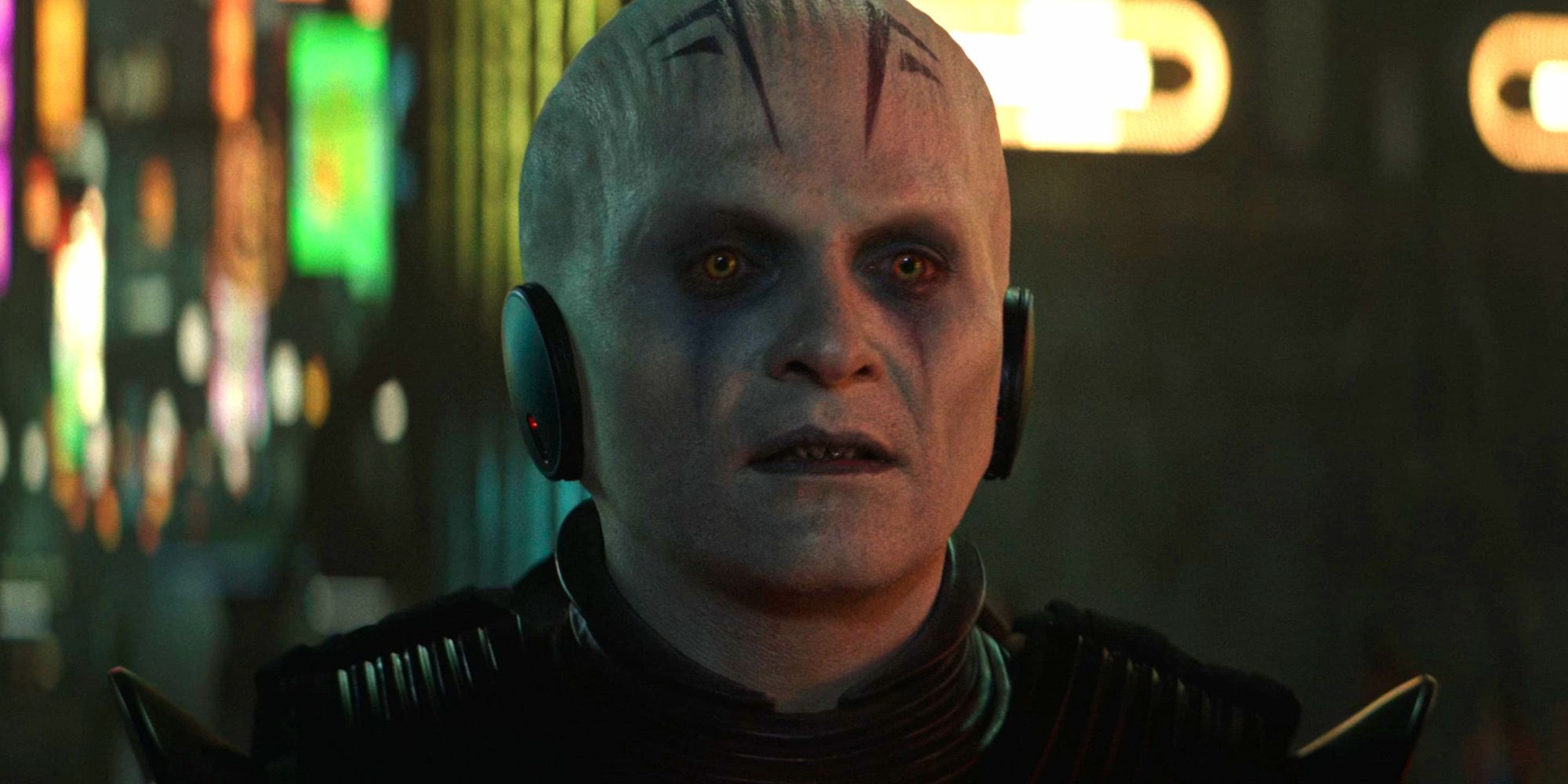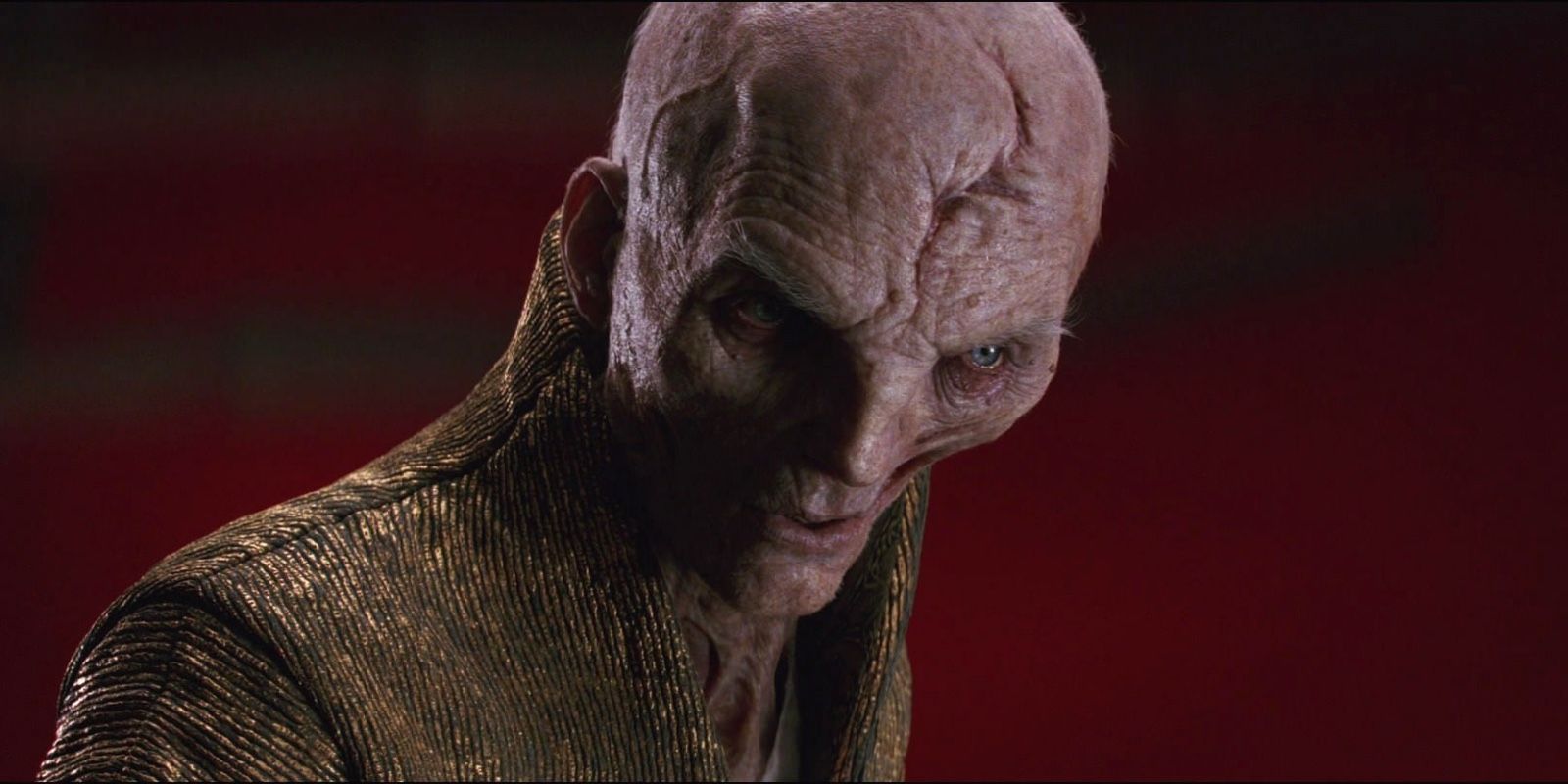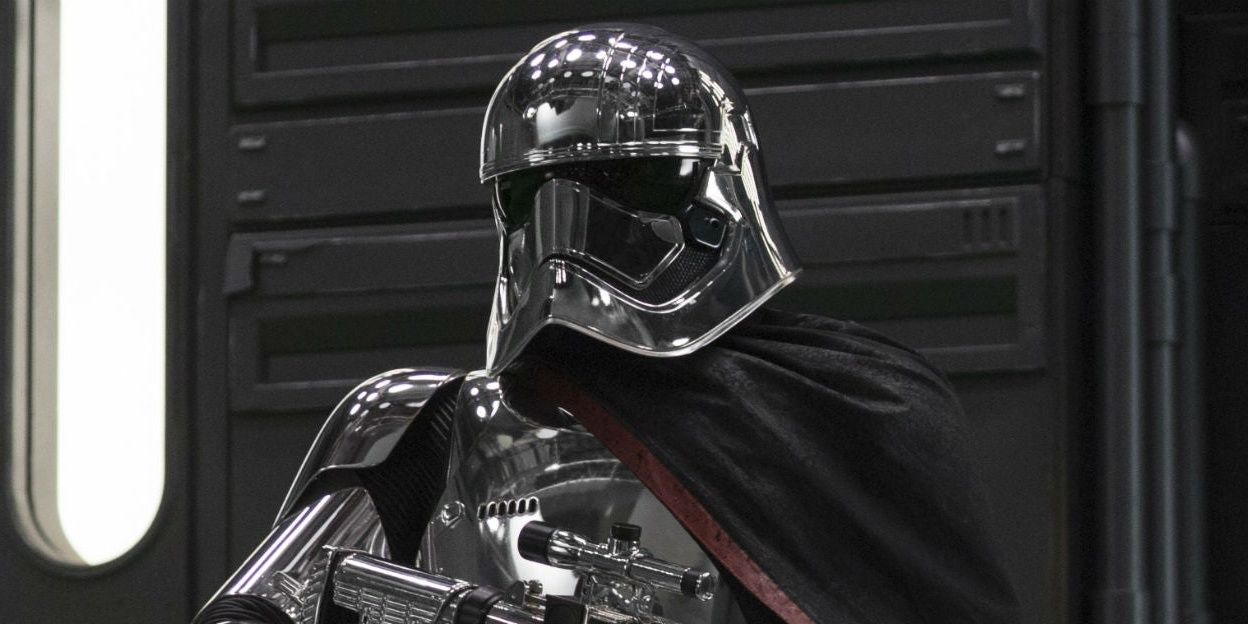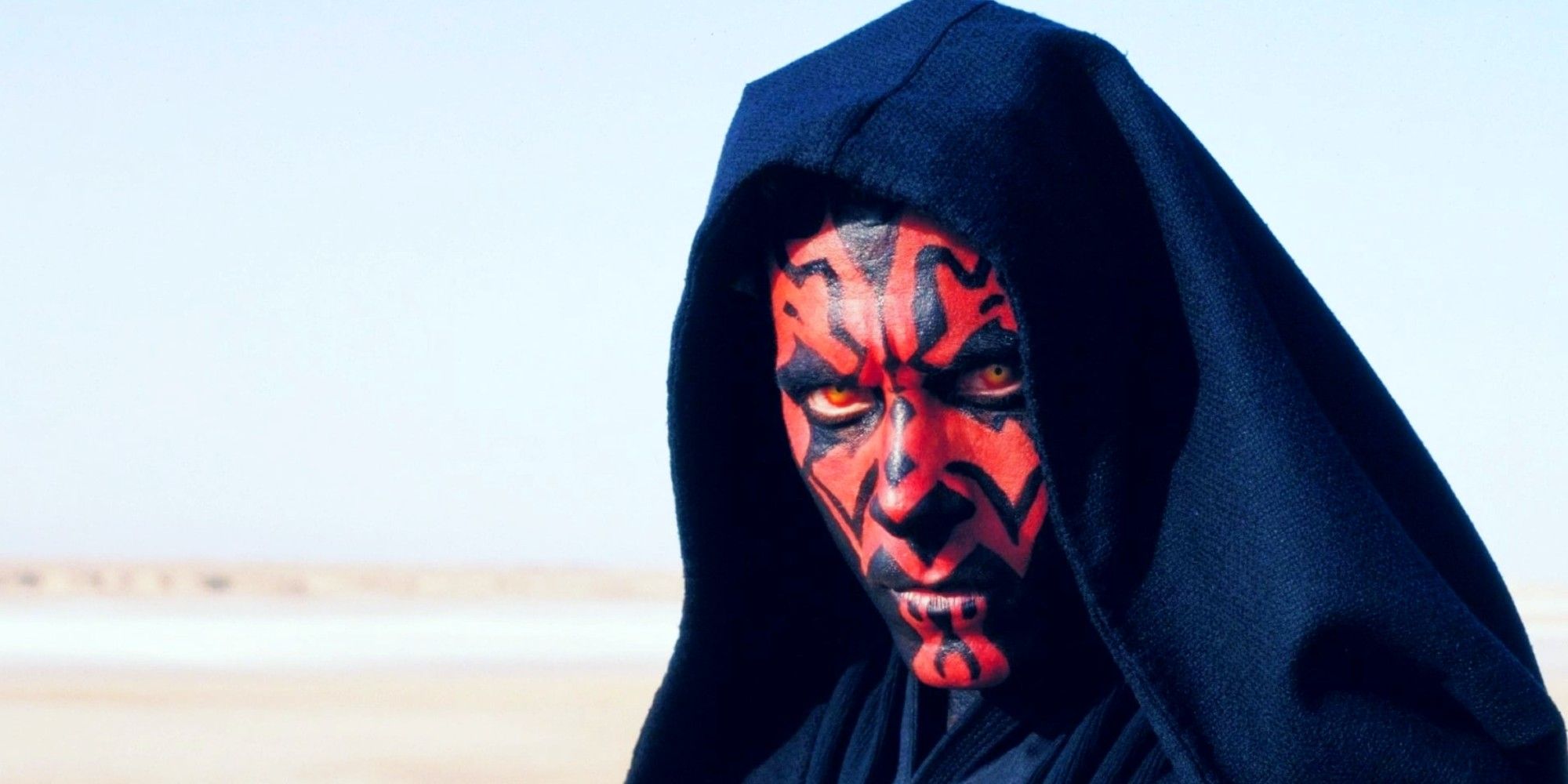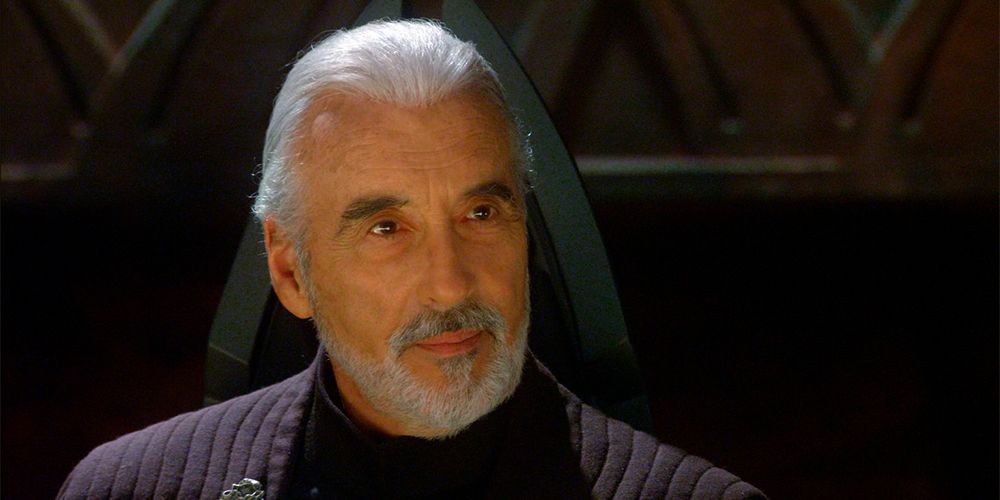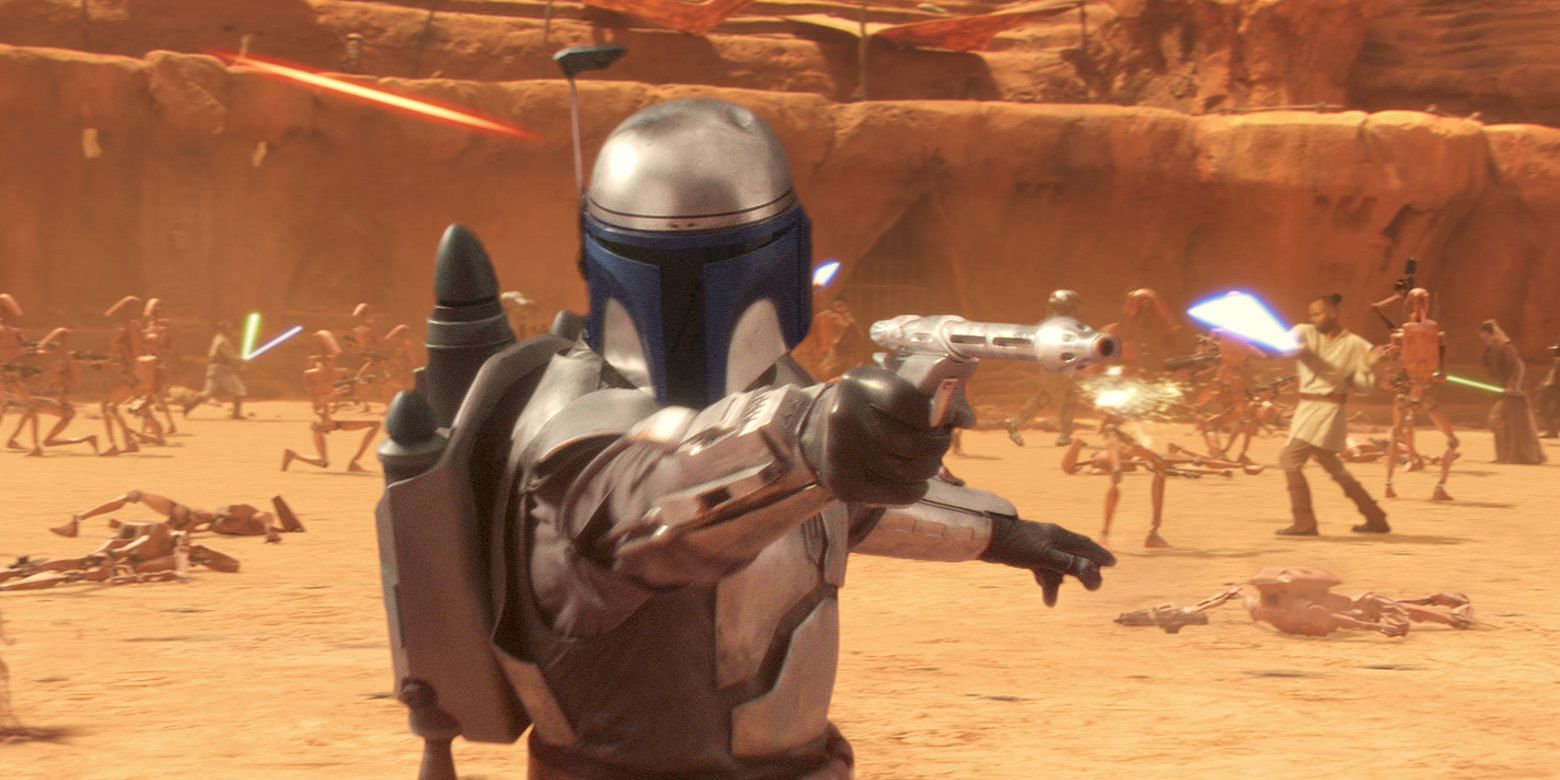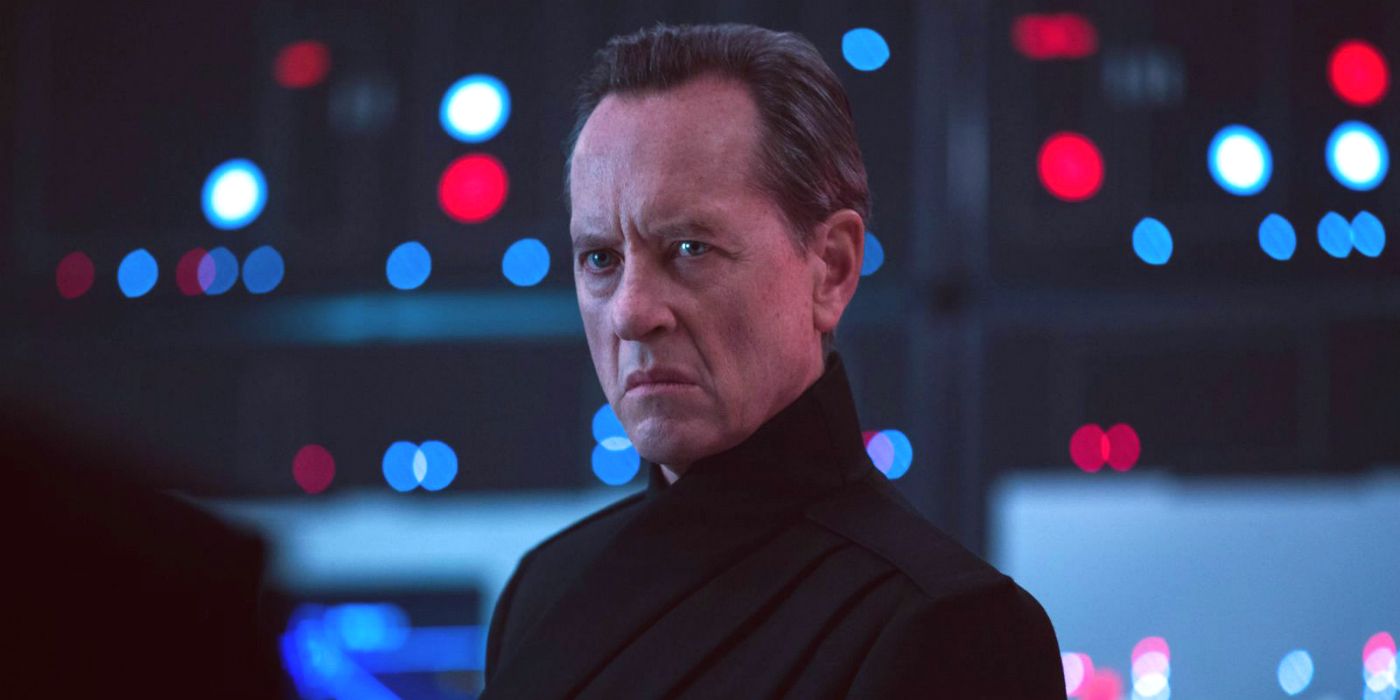Star Wars villains comprise a cohort of some of cinema's most frightening, scheming, and badass antagonists, yet recent live-action series like Obi-Wan Kenobi can reveal how much they fall short when not given a strong narrative foundation. Efficacy and ruthlessness sabotaged by poor character development, inconsistencies, and too few scenes render them some of the franchise's biggest letdowns.
Some villains are introduced and built up only to be unceremoniously killed off, while others are given quite a bit to do but without a sincere emotional payoff, and others simply never lived up to their hype and potential.
Grand Moff Tarkin
The only Imperial officer who could "hold Vader's leash" was Grand Moff Tarkin, one of the Emperor's closest confidantes and military enforcers from the budding days of the Empire as it assimilated all vestiges of the Separatist movement into its fold while quietly reducing the Republic to ash. A brilliant tactical mind, he created the Tarkin Doctrine, a sweeping opus of bureaucratic oligarchy, and took credit for the creation of the Death Star.
Portrayed by the inimitable Peter Cushing, a legend of the horror and sci-fi genres, he was seen in small but important scenes in both Star Wars: A New Hope and Rogue One: A Star Wars Story, and appeared in a few of the animated series as a minor antagonist. Tarkin was one of the most terrifying Imperial officers who conveyed the hubris of the Empire, and unfortunately with his death, the rest of the villains were all over-powered Force users.
Director Krennic
Cursed to interact with indifferent minds that didn't share his vision, Director Krennic sought to reach the upper echelons of Imperial influence through direct coercion via the Emperor's enforcer. He was confident enough to kidnap Galen Erso at his own home, and saunter into Darth Vader's personal place of residence in an effort to outmaneuver his professional rival, Grand Moff Tarkin, both of which didn't end well for him.
In the end, Director Krennic wasn't destined to be Tarkin 2.0, but middle management, regulated to taking the fallout for the Rebels' win. He was seen as an expendable asset to the Empire, no matter how loyal he was, making him a cautionary tale rather than a powerful antagonist.
Third Sister
Reva's methods successfully got venerated Jedi Master Obi-Wan Kenobi, succeeding where even Darth Vader could not. Soon, however, she was berated by Fifth Brother who, in Star Wars Rebels wasn't presented as an intellectual giant, resulting in her appearing inferior for no particular reason than her methods were more reckless.
While her direct superior, the Grand Inquisitor was busy making a loquacious speech, she was the one who threw a knife at the bartender to flush out the Jedi in hiding. She was presented as a capable and accomplished villain, yet by the end of Obi-Wan Kenobi was someone who gave into insecurity, rash decisions, and emotion, outmaneuvered by Vader (who she'd been shadowing for years).
The Grand Inquisitor
The Grand Inquisitor, as he's presented in Obi-Wan Kenobi, could have been a fascinating character. The Empire's xenophobia was in stark contrast to the acceptance and tolerance shown in the ranks of the Rebel Alliance and the Resistance, yet here was an alien in a position of authority, who had only been seen in animated form.
He simply wasn't given enough to do, and his appearances always came across as ham-fisted into the rest of the unfolding drama, making him appear like one of the least competent Star Wars villains. Even his supposed "death" was excused away in a way that didn't give the character any credit or resilience. His inner turmoil, conflict, and dogmatism would have made for a more complicated villain than what was shown.
Supreme Leader Snoke
Supreme Leader Snoke was a giant mystery when he was first introduced - a physically warped, bizarrely elongated being strong in the dark side of the Force, who was able to manipulate the prodigal son of two Rebel heroes. For two years between Star Wars: The Force Awakens and Star Wars: The Last Jedi, fans eagerly theorized about Snoke's origins, concocting the most incredible tales around the rise to power of such a heinous litch.
Yet no sooner was he introduced than he was terminated by his apprentice and by the time Star Wars: The Rise of Skywalker was released, the explanation of his origins was as lifeless as their confessor. His character needed to embody the essence of Palpatine in more than one way - he needed to be iconic in his own right, and he was reduced to being the puppet of another villain's machinations.
Captain Phasma
When Captain Phasma appeared onscreen in Star Wars: The Force Awakens, she was visually striking and intimidating, both traits which pointed toward her being an effective villain in the vein of other masked scourges like Darth Vader. As with Snoke or the Grand Inquisitor, she stood out; like aliens in the ranks of the Empire, women in positions of authority were not a frequent entity.
When she should have had an investment into the dereliction of duties from FN-2187, sparking a cat-and-mouse game that sprawled across the Sequel Trilogy, she was given no narrative purpose that succeeded in either furthering her own development as a character or his.
Darth Maul
Darth Maul was a villain that seemed to define the conflict of the Prequel Trilogy and emerged as a villain who was more popular than the heroes. Yet this mysterious dark sider warrior, with his intriguing face tattoos, burning eyes, and sharp crown of thorns was killed at the end of Star Wars: Episode I - The Phantom Menace just as his star was rising.
Luckily, Maul proved so popular he was brought back in various animated incarnations until Solo: A Star Wars Story, but these were all in an effort to apply a Band-Aid to a gut wound. He should have been able to develop organically, with a story as enriching and multi-faceted as Vader, rather than composited after the fact.
Count Dooku
After the egregious death of Darth Maul, Darth Sidious needed another apprentice, and for some reason, selected an elder statesman with a gift for mellifluous monologuing. Dooku was a throwback character from the original trilogy, whose urbane manners and loquacious turn of phrase put him in stark opposition to overly emotional opponents like Anakin Skywalker.
Yet for all his grandeur, Dooku felt like a stop-gap in the story, a necessity spawned from getting rid of Maul's character. Portrayed by veteran thespian Sir Christopher Lee (known for embodying Dracula), Dooku was an underrated Star Wars villain and a model Sith lord but when he was no longer necessary, he was killed, much like Maul, in a fashion that made it clear not only was his character never given any direction, he had so much wasted potential.
Jango Fett
What bounty hunter could be more notorious than Boba Fett? As it turned out, his father, Jango Fett, provided the genetic material necessary to clone the Grand Army of the Republic. A quick-thinking, resourceful, and callous mercenary, Fett would do anything for the highest bidder and seemed to be a competent fighter even against someone like Obi-Wan Kenobi.
However, in the Geonosian arena in Star Wars: Episode II - Attack of the Clones, he used none of his tactical prowess against Mace Windu, simply choosing to stand and fire at the Jedi Master while he charged him. Fett not only lost his martial abilities, but he also seemed to lose his intellectual faculties as well and died for no other reason than to give Boba Fett a morose backstory.
Allegiant General Pryde
Allegiant General Enric Pryde was a villain that was introduced in Star Wars: The Rise of Skywalker as a stone-faced officer of considerable rank and influence in the First Order. In the capstone installment of the Skywalker saga, he didn't stand out enough from other military personnel like Armitage Hux, yet was permitted to execute a character who had been vital to the previous installments of the Sequel Trilogy.
As an officer who served the Emperor in the Galactic Civil War, Pryde should have appeared in the earlier films, but almost all of Pryde's story came from the movie's novelization, robbing his onscreen character of impact. His connection to the Emperor and the Sith Eternal, his relationship to the Corporate Sector Authority as a spy, his rivalry with Hux, all of this was wasted, including a sterling performance from Richard E. Grant.

